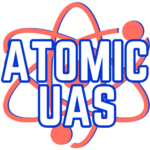Welcome to the high-flying world of drone mapping, where cutting-edge technology takes to the skies, capturing landscapes with precision and finesse. If you’ve ever marveled at the accuracy of those stunning aerial maps or wondered how drones seem to navigate with such exactitude, you’re in for a treat. Today, we’re diving into the magic of RTK and its crucial role in the fascinating realm of drone mapping.
What on Earth (or in the sky) is RTK? #
RTK, or Real-Time Kinematic, might sound like a top-secret code or the name of a futuristic robot, but it’s actually the wizardry behind the astounding accuracy of GPS systems. Imagine your standard GPS but supercharged with precision and speed.
Let’s break it down: GPS relies on satellite signals to determine your location. It’s like having a digital roadmap in the sky guiding you to your destination. However, GPS has its limitations when it comes to precision. That’s where RTK swoops in heroically.
How Does RTK Work its Magic? #
RTK takes GPS accuracy to another stratosphere by using a ground station as a reference point. This ground station, equipped with a known location, communicates with the drone in real-time, correcting any errors in GPS signals with incredible accuracy—often down to just a few centimeters. It’s like having a GPS guardian angel watching over the drone’s every move.
Drone Mapping: Where RTK Shines Brightest #
Now, let’s tie this celestial-level GPS accuracy to the dazzling world of drone mapping. Picture this: a drone soaring gracefully above fields, construction sites, or even archaeological sites, capturing images with precision that would make a ruler envious. That’s the power of RTK in action.
In drone mapping, RTK technology ensures that each image taken by the drone is geotagged with pinpoint accuracy. When these images are stitched together, they create high-resolution, incredibly detailed maps that are not just visually stunning but also highly reliable for various applications.
Applications That’ll Make Your Head Spin #
The applications of RTK-enabled drone mapping are as diverse as they are mind-boggling:
- Agriculture: Farmers use drone maps to assess crop health, monitor irrigation, and optimize field operations, thanks to the precise data gathered by RTK-enabled drones.
- Construction: Builders leverage drone maps to track progress, plan logistics, and conduct accurate site surveys, ensuring every structure stands on solid ground—literally.
- Environmental Conservation: From tracking changes in ecosystems to monitoring wildlife habitats, RTK-powered drone maps aid in preserving our planet’s natural wonders.
- Emergency Response: During disasters, such as floods or wildfires, drones equipped with RTK mapping capabilities help emergency responders assess damage and plan effective rescue missions.
The Future Looks Sky-High #
As technology continues to evolve, the marriage of RTK and drone mapping will only become more sophisticated. Imagine drones autonomously creating 3D maps of entire cities or aiding in search-and-rescue missions with unparalleled accuracy. The possibilities are as vast as the open sky.
So, the next time you marvel at a flawless aerial map or witness a drone navigating with seemingly supernatural accuracy, remember the unsung hero behind the scenes—RTK, the GPS magic making it all possible.
In conclusion, RTK isn’t just a mouthful of acronyms; it’s the backbone of precision in the thrilling world of drone mapping. So, here’s to RTK—guiding drones to new heights and mapping our world with astounding accuracy.
Until next time, happy mapping and keep your eyes on the skies!




